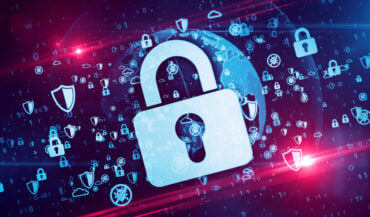
In flood-prone areas, communities can leverage analytics and IoT sensors to increase situational awareness, deliver advanced warnings, and improve emergency response through automation.
Often, there is no warning of a natural disaster, and the consequences can be costly. After an event like a hurricane, tornado, earthquake, flood, or wildfire, communities need help to cover the costs for debris removal, life-saving emergency protective measures, and restoring public infrastructure. The recently passed American Rescue Plan Act of 2021 is helping communities do that, allotting $50 billion for the Federal Emergency Management Agency’s (FEMA) Disaster Relief Fund to help state and local governments respond to and recover from these major disasters or emergencies.
As communities look for ways to address the vast impacts of natural disasters, Internet of Things (IoT) technologies and advanced analytics are emerging as a game-changer for impacted communities, especially as they can help them better prepare for and react to incidents.
Access to real-time data is the key for improved situational awareness. Knowing how weather-related conditions such as rain and water levels are changing in real time can help communities prepare for and react to potential dangers sooner to better protect infrastructure and the community. Connected sensors enable this data capture, advanced analytics uncover key insights, and long-range connectivity is important as sensors are in outdoor and harsh environments. The combination of IoT analytics and connectivity technology will accelerate intelligent decisions and improve overall response time in the event a natural disaster does occur.
Floods Are Increasingly Dangerous
According to the World Recourse Institute, by 2030, the number of people impacted by flooding will double worldwide. As water levels rise quickly and with little warning, it can result in dangerous situations for communities and emergency responders. In coastal communities where the National Environmental Education Foundation estimates that the majority of these communities will experience more than 30 days of flooding each year by 2050, rising waters from tidal surges and weather-related events can quickly and unexpectedly present a large threat to people and infrastructure, especially during hurricane season. Leveraging real-time sensing capabilities and advanced analytics can help prepare future generations to better predict, prepare, and respond to these challenges.
These disasters pose a danger to buildings, businesses, community sanitation, and, most importantly, individual lives. For buildings, especially in flood-prone areas, water can significantly damage the foundation and supports, requiring immediate repairs. That type of damage alone can significantly hurt businesses, but water damage can also affect a company’s vehicles, computers, machines, and data storage devices.
From a sanitation perspective, waterborne diseases spread quickly in a flood. Rising water can carry human, animal, industrial, medical, and hazardous waste, contaminating a whole city in minutes and greatly disrupting natural ecosystems. Most devastating is the potential loss of life when a flood occurs.
To monitor rising water zones, long-range, low-power-enabled sensors can be deployed in hard-to-reach areas and along the water’s edge. These sensors can calculate water height and depth, gather data in real time, and update designated dashboards or send alerts if the water reaches concerning levels.
Combining IoT Sensors with AI and Streaming Analytics at the Edge
IoT is forcing a fundamental shift of business and operational strategies as organizations adopt new models for agile IT, edge analytics, and platform-based security. With flood sensor networks empowered by advanced analytics, communities can get real-time insights on the timing and location of a flood, how deep the water may be, and the changing conditions.
End-to-end solutions that incorporate long-range low-power connectivity and advanced analytics simplify the development of solutions that are focused on solving real world problems. This type of solution offers data, streaming analytics, and artificial intelligence (AI), and gateways.
In flood-prone areas, communities can leverage analytics and IoT sensors to increase situational awareness of rising stream levels, better predict where flooding might occur, deliver advanced warnings, and improve emergency response through automation. With predictive analytics, officials can go beyond learning what happened before to discovering insights that will help better identify the likelihood of future outcomes based on data, and send out alerts in advance.
With smart sensors, alerts can send data to first responders without having them physically assess the flood area. Through individual, battery-operated sensors, users can connect to gateways that continuously collect data at the edge, allowing IoT solutions to measure and detect issues before they become a crisis remotely.
While communities are still exploring the role AI plays in flood prevention, it’s critical when it comes to detecting issues with sensors. For example, monitoring battery levels and power levels.
When IoT devices are paired with AI and streaming analytics on long-range, low-power sensors, experts can calculate and track water levels and depths in real-time continuously so they can make fast and accurate decisions that may minimize or eliminate risk to businesses and society. The small sensors can be installed in hard-to-reach areas like basements, alleys, and sewers to remotely track water and immediately alert teams if levels begin to rise. Additionally, since these devices use low power, they can be battery operated for years and connect to gateways wirelessly to remain in the environment without the need for maintenance.
Between IoT sensors, advanced analytics, and the right digital infrastructure strategy, communities can harness IoT data and enable applications that drive meaningful and timely results. By implementing this type of solution, communities can act on early warnings, remove residents from potential danger, and the first responder teams can plan their resources and personnel accordingly.





























